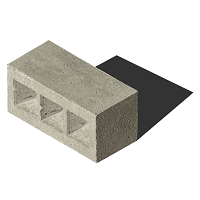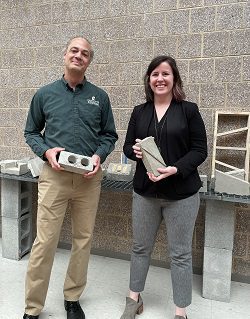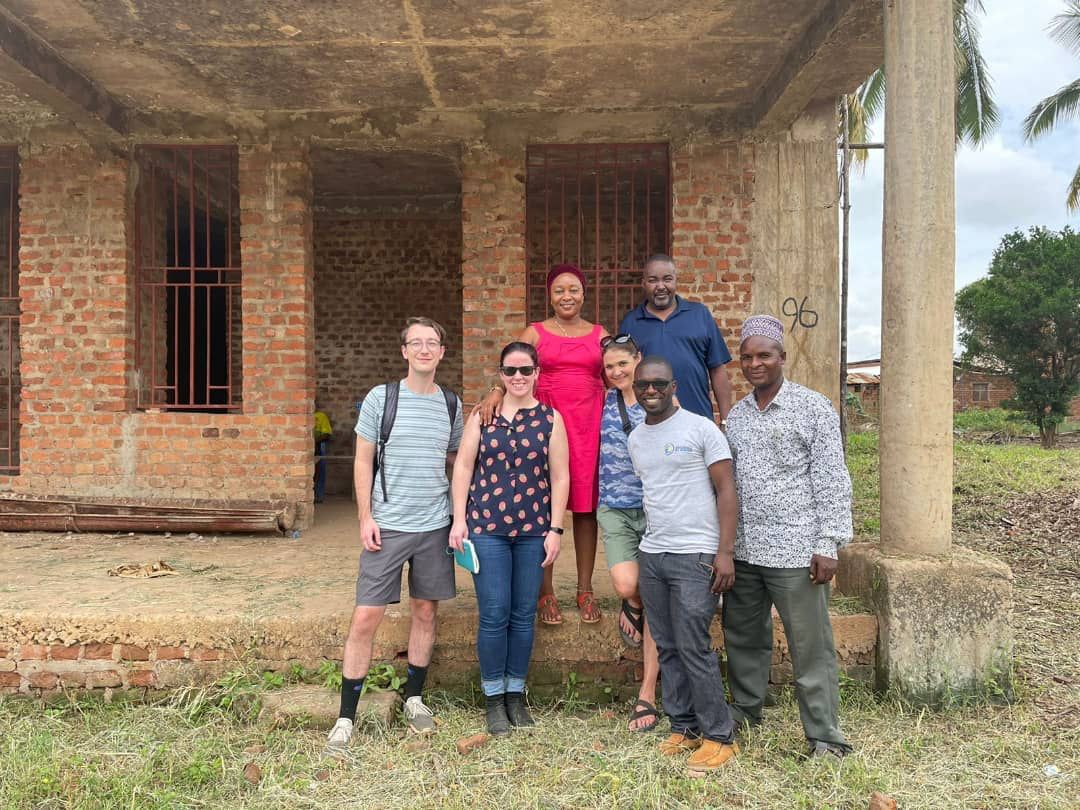Professor’s NSF Grant Allows Students to Join Research Project in Tanzania

Assistant Professor of Architecture Liz McCormick and her and co-investigator Brett Tempest, Associate Professor of Civil and Environmental Engineering, have received a grant from the National Science Foundation (NSF) to engage students in McCormick’s continued research into climate-resilient architecture in tropical regions. Awarded in the category of International Research Experience for Students (IRES Track 1), the three-year, $300,000 grant will allow six students per year to join McCormick and Tempest in Tanzania, Africa, for applied community-engaged research in summer sessions.
Through the funded project, “Sustainable Housing & Protective Building Materials: Masonry as a Link Between Accessible Construction, Energy, Human Comfort and Mosquito Control in Rural Tanzania,” McCormick, Tempest, and their student researchers will develop and test material and design innovations in brick in an effort to create homes for Tanzanians that maintain a comfortable temperature, are appealing and relatively easy to construct, and keep mosquitoes out.
 “Nearly two thirds of Africans do not have access to reliable electricity and must rely on open-air passive conditioning strategies in domestic environments, which provides significant risk from mosquito-borne diseases,” the project proposal states.
“Nearly two thirds of Africans do not have access to reliable electricity and must rely on open-air passive conditioning strategies in domestic environments, which provides significant risk from mosquito-borne diseases,” the project proposal states.
McCormick has already begun to tackle this problem in studios she has been teaching in the School of Architecture.
“Our work thus far has focused on the brick geometry and how it can be improved to allow for ventilation, cooling, AND to prevent mosquito intrusion,” she said.
 For example, a design (pictured left) from Fall 2021 by graduate student Nathan Smith “uses the principles of the Venturi effect to increase the cooling effect of air while also increasing air velocity above a level that mosquitos can fly,” McCormick said. Michael Serrano, a student in her current Spring 2023 studio, designed a brick that “uses material friction to create convective vortices, allowing fresh air to flow, but disturbing mosquito flight.”
For example, a design (pictured left) from Fall 2021 by graduate student Nathan Smith “uses the principles of the Venturi effect to increase the cooling effect of air while also increasing air velocity above a level that mosquitos can fly,” McCormick said. Michael Serrano, a student in her current Spring 2023 studio, designed a brick that “uses material friction to create convective vortices, allowing fresh air to flow, but disturbing mosquito flight.”
Brick is the most common building material in the world, but the manufacturing process can often lead to high levels of environmental pollution. McCormick and Tempest will work with researchers at the University of Dar es Salaam in Tanzania to study how changing the composition of brick – using, for example, Cassava flour as a binder – might reduce emissions associated with manufacture, resulting in a more climate-friendly building material.
 During the three years of grant funding, McCormick and Tempest will co-teach a joint, semester-long research studio for 14-16 undergraduate and graduate students in both architecture and engineering. In each studio, students will begin with the bricks themselves, working to develop building blocks that can permeate air, store water, and deflect insects. They then will create design strategies for how those bricks are used. Throughout the course of the research studio, students will interact regularly with international partners through remote presentations and regular website updates.
During the three years of grant funding, McCormick and Tempest will co-teach a joint, semester-long research studio for 14-16 undergraduate and graduate students in both architecture and engineering. In each studio, students will begin with the bricks themselves, working to develop building blocks that can permeate air, store water, and deflect insects. They then will create design strategies for how those bricks are used. Throughout the course of the research studio, students will interact regularly with international partners through remote presentations and regular website updates.
A subset of six studio students will be able to continue their research through paid internships, traveling to Tanzania in the summer to work with local materials and regional experts to develop housing prototypes that rural Tanzanians might adopt. Each year, students will build on the knowledge produced in previous years.
“There’s a material component, which is why the partnership with civil engineering is so important,” said McCormick. “But there’s also a human acceptance component, which is why we also have social science partners at the King’s College Institute of London and Ifakara Health Institute (in Tanzania).”
Nathan Smith, who graduates this spring with a Master of Architecture, traveled with McCormick to Ifakara, Tanzania, over spring break to explore local housing typologies and traditional modes of construction.
“We went to visit a designated brick making site in Ifakara to see the brick making process firsthand,” Smith reflected after his return to Charlotte. “After seeing our designs, the brickmakers said that it would be easy to create these bricks and started trying to work out how to do it. When design is based in a community, it can bring people together and allow people from widely different backgrounds to come together for a common good. During my visit, I saw this first-hand as I spoke with the people in Mtimbira and saw the excitement on their faces as they heard about our brick designs. I saw it in the laughs of the brickmakers as they joked about how they could make these bricks. And I saw it in the absolute openness of all of the folks at Ifakara Health Institute as they told us all about these communities.”

Smith (above left, next to McCormick) said the experience gave him the opportunity to witness the importance of community-based design.
“When we design with the community, we are not only creating spaces, but we are also creating a sense of belonging and identity for the people. It is about creating spaces that are functional, sustainable, and, most importantly, meaningful to the people who will use them.”